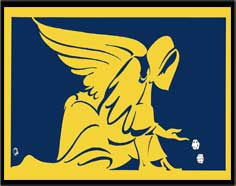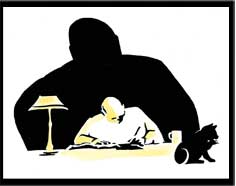By all accounts early N.S.W. police constables were corrupt, brutal and despised. Historian Russel Ward argues that, from the colony’s founding until the 1850s, its police force was comprised of ex-convicts who ‘were not the best prisoners but the worst’. By joining the despised police, constables broke the cardinal rule of mateship and ‘forfeited utterly the respect of their fellows’. Organized on paramilitary principles rather like an occupying army, the N.S.W. police conducted themselves in an accordingly corrupt and authoritarian manner, winning the profound enmity of the populace. Following the abolition of the N.S.W. Corps, perhaps the progenitors of the colonial police malaise, Governor Lachlan Macquarie established a more organized Sydney police in 1810 with the authority to ‘punish all prisoners, freemen, rogues, and vagabonds’. During successive decades N.S.W. police combined law enforcement with the direct administration of punishment by whipping, a procedure that cost them public esteem.
To combat bushranging, the N.S.W. government established a Horse Patrol in 1825 on para-military principles, similar to those of the Royal Irish Constabulary, whose repressive tactics were rejected as ‘essentially inapplicable’ to England and Wales by an English Royal Commission in 1839. Finding the local recruits drunken and disorderly, the Horse Patrol recruited its constabulary from British police, as did the metropolitan force a decade later, and began a tradition that continued for over a century and added further to the alien character of the N.S.W. police. In 1927 Commissioner James Mitchell recalled that when he joined the force in 1884 it was comprised largely of former British officers, and some police units like the mounted division had almost no native Australians in service. During the 1920s almost 11 per cent of the 3,104 N.S.W. police was of British nationality. The lack of acceptable recruits kept the force over 10 per cent below strength, forcing the Inspector General to suggest that recruitment standards be lowered. With the onset of the depression, however, jobs became scarce and the police had a waiting list of eligible candidates.
Corruption was a continual problem among the colonial police. Although the average strength of the force was only fifty, fifty-seven men were ‘dismissed for misconduct’ and another twenty-five resigned during an eighteen month period in 1825-6. Despite a remodelling of the Sydney police in the 1830s, corruption continued and during the 1844-7 period eighty-two constables were dismissed from a force that averaged no more than 100 men. Following the New Years’ Day riots of 1850 when police lost control of the crowds, a Board of Inquiry discovered that the still substantial convict element in the force tended to collaborate with criminals they were supposed to apprehend. In 1839 Sydney Police superintendent Colonel H. C. Wilson was dismissed from his post for malfeasance as were his two successors in the following decade.
To restrain urban rioting and goldfields bushranging, the five separate N.S.W. police units were consolidated into a single force numbering some 800 men in 1862. While English police were based in local communities and answerable to the populace, N.S.W. colonial authorities opted for a centrally located force responsive to the wishes of the government. With only minor revisions of superannuation conditions in 1906 and the addition of a Police Appeals Board in 1923, the N.S.W. police has maintained this para-military structure — largely alien to the Anglo-American traditions of locally controlled police.
Aloof, authoritarian and alien, the N.S.W. police manoeuvred in the slums of Sydney like an occupying army until well after World War II. One of the earliest anti-police demonstrations occurred in 1848 when a large crowd attacked the St James Police Watchhouse ‘in the belief that some of the police had taken refuge therein’ and released the prisoners. Commissioner W. H. Childs recalled that in 1892 with only twelve days of training, he was ‘flung out into the welter of brickbats and boots of the dreaded Sydney docks area’. The 1880s and 1890s were the era of the youth gangs known as the ‘pushes’, and one of their primary activities seems to have been harassment of police. The pushes were described by a contemporary observer as gangs which ‘collected in crowds at street corners at first content to revenge themselves upon their social superiors, who had despised them, by abuse and occasional assaults. By insensible degrees, their operations expanded, and realizing their strength, they tyrannised over all thoroughfares in the neighbourhood of their retreats’. Determined to break the gangs, the government armed the police in 1893 and formed a special armed Light Brigade. Diverted into organized sport and pressed by police, the pushes had largely faded by 1900 and survived in only a few of the slum areas.
Not criminal in the ordinary sense of the word, the pushes were the personification of the continuing rift that had formed between the slums and police. Although not engaged in profit-oriented crime, the pushes were nonetheless among the first identifiable crystallization of popular anti-authoritarian values that later found expression in the criminal syndicates of the 1920s. Henry Lawson captured these values in his poem ‘The Captain of the Push’ published in 1892. When a stranger, ‘the bastard from the bush’, approaches the push and asks to join, the push captain subjects him to an examination:
‘Now look here,’ exclaimed the captain to the stranger from the bush,
‘Now, look here — supposed the Bleeders let you come and join the push,
Would you smash a bleedin’ bobby if you got the blank alone?
Would you break a swell or Chinkie — split his garret with a stone?
Would you have a moll to keep yer — like to swear off work for good?
‘Yes, my oath’ replied the stranger. ‘My kerlonial oath! I would!’
An enormously popular poem in its day, Lawson’s verse expresses the essentials of the underworld ethos. The stranger is asked, in essence, to swear an oath of allegiance to a separate society and its special code of ethics. Severing his ties to the larger world, the stranger affirms his loyalty to a morality in which the push or milieu is his only reference. In the course of his interrogation, the captain of the push lists the basic values and obligations which bind members of a criminal milieu, whether in Sydney, Marseille or New York — a determination to maim or murder traitors, hatred of police authority, disdain for those outside the group, and a willingness to live off illicit income.
The cardinal cultural virtue of loyalty to one’s ‘mates’ and antagonism towards authority has remained a general characteristic of Australian working-class culture. A person who aids authorities has been scorned in the Australian dialect as a ‘phizz gig’, ‘police pimp’, ‘Judas’, or ‘informer’, and the act of informing is described with special derogatory terms: to ‘top off’, ‘dob-in’ or ‘cry copper’. In this century these values have been recorded and transmitted through generations of Sydney children in their schoolyard rhymes:
Tell tale tit,
Your tongue will split,
And all the little puppy dogs,
Will have a little bit.
If strong anti-authority values were already well-formed among the urban poor of the 1890s, there is, however, little evidence to indicate that the criminality of the day was in any sense ‘organized crime’. There were significant segments of the population making their income from illegal and quasi-legal sources, but most were individuals or small groups confined to a particular field: illegal bookmakers, unlicenced totalisator operators, prostitutes, brothel keepers, thieves and armed robbers. Within each field there were some prominent professionals like Melbourne’s John Wren whose illegal Collingwood Tote was a city institution for thirteen years, or Caroline Pohl, known as ‘Madame Brussell’, whose baroque brothel served generations of late nineteenth century Victorian bourgeoisie under the patronage of Sir Samuel Gillott, three times Lord Mayor of Melbourne. The economy’s illicit sector was too fragmented and activities too isolated to provide the financial base for a fully developed criminal milieu.
While the cultural prerequisites for an underworld, such as the rule of silence and hostility towards police authority, were well-developed by the 1890s, Australia’s urban economies were still incapable of sustaining a large class of powerful professional criminals. It was not until the 1920s that conditions changed enough to allow the emergence of organized crime.
from Drug Traffic by Alfred McCoy











You must be logged in to post a comment.